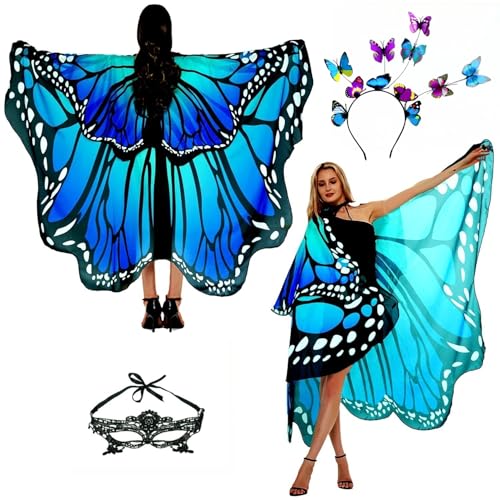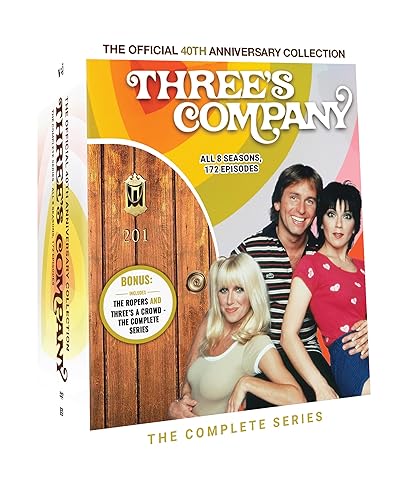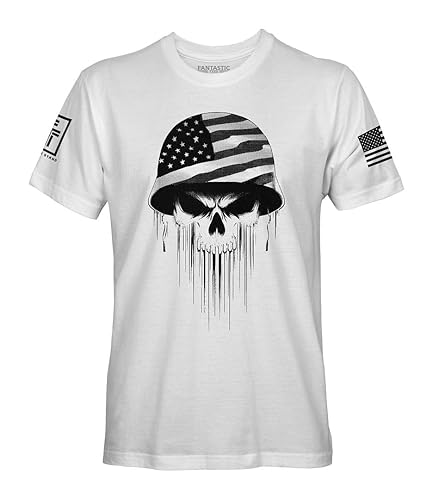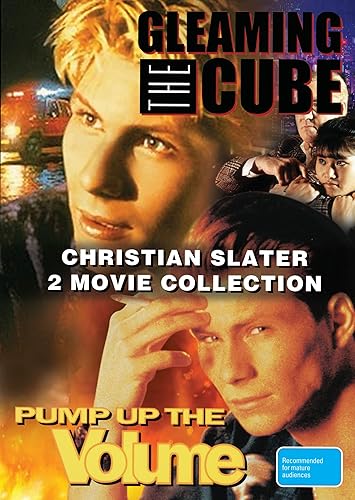Halloween, a holiday associated with costumes, candy, and spooky celebrations, has a rich history that spans centuries. This article explores the origins of Halloween, its traditions and customs, and examines whether it is truly an American holiday.
The history of Halloween can be traced back to ancient customs and traditions. It originated from ancient Celtic festivals, particularly the festival of Samhain, which marked the end of the harvest season and the beginning of winter. The Celts believed that on the night of October 31st, the boundary between the living and the dead was blurred, and spirits could roam the Earth. This gave rise to practices such as bonfires and wearing costumes to ward off these spirits.
With the spread of Christianity, the Catholic Church sought to replace pagan festivals with Christian observances. In the 8th century, the Christian feast of All Saints’ Day was established on November 1st to honor saints and martyrs. The evening before, known as All Hallows’ Eve, gradually became Halloween.
Halloween traditions and customs have evolved over time. Trick-or-treating, where children dress in costumes and go door-to-door asking for candy, became popular in the United States in the early 20th century. Costumes and dressing up, ranging from spooky monsters to beloved characters, have become a staple of Halloween celebrations. Jack-o’-lanterns, carved pumpkins with a lit candle inside, are another iconic symbol of Halloween. Haunted houses and elaborate decorations have also become a prominent part of the holiday.
While Halloween has a strong association with American culture, it is not solely an American holiday. Halloween celebrations vary across different countries and cultures. In the United States, Halloween is widely celebrated with costume parties, haunted attractions, and community events. American culture has undoubtedly played a role in shaping the modern perception of Halloween, with movies, television shows, and popular traditions influencing celebrations worldwide.
Internationally, Halloween is observed in various ways. In Mexico, the Day of the Dead (Dia de los Muertos) honors deceased loved ones with colorful festivals and gatherings. In Ireland, the birthplace of Halloween, traditional customs and folklore are still embraced. Other countries, such as Canada, the United Kingdom, and Australia, have adopted many American Halloween traditions but also incorporate their own cultural elements.
The popularity and commercialization of Halloween have skyrocketed in recent years. Halloween-themed movies, music, and merchandise dominate popular culture during the holiday season. Halloween has become a highly profitable industry, with billions of dollars spent on costumes, decorations, and candy.
Key takeaway:
- Halloween maximizes creativity: Halloween traditions like costumes, jack-o’-lanterns, and haunted houses allow people to express their creativity and imagination.
- Halloween’s global influence: Although Halloween originated in Celtic traditions and was adopted by the Christian church, it has become a widely celebrated holiday internationally, thanks to the influence of American culture.
- Halloween’s economic impact: Halloween has evolved into a highly commercialized holiday, with a significant economic impact through the sale of costumes, decorations, and candies.
History of Halloween

Photo Credits: Rickyshalloween.Com by Bryan Lewis
Digging into the captivating history of Halloween, we uncover its intriguing origins, traces of Celtic traditions, and the intriguing adoption of this holiday by the Christian Church. Uncovering the depths of Halloween’s past promises a thrilling journey into the cultural and religious evolution that shaped this American holiday. Join me as we unearth the hidden gems of the history of Halloween, revealing the fascinating stories and customs that have stood the test of time.
Origins of Halloween
The origins of Halloween can be traced back to ancient Celtic traditions. It originated from the Celtic festival of Samhain, marking the end of the harvest season and the start of winter. Samhain blurred the boundary between the living and the dead, with beliefs that spirits roam the earth. People lit bonfires and wore costumes to ward off these spirits.
When the Christian church adopted the holiday, it became All Hallows’ Eve, preceding All Saints’ Day. Samhain traditions were incorporated into this Christian holiday, celebrating and honoring the dead.
Over time, Halloween evolved and became associated with costumes, trick-or-treating, and other festive activities. It has also gained worldwide popularity, influenced by American culture, and celebrated in unique ways by various countries.
One true story reflecting the origins of Halloween is the tradition of carving jack-o’-lanterns. Legend tells of Stingy Jack, who tricked the devil and was left to wander with a turnip lantern. People began carving their own versions of “Jack’s lantern” using pumpkins. This tradition blends ancient Celtic beliefs with Christian customs.
Halloween in Celtic Traditions
Halloween, known as Samhain in Celtic traditions, is a celebration that marked the end of the harvest season and the beginning of winter. [1] (Source) Here are some key aspects:
- Origins: Halloween originated from the Celtic festival of Samhain. It was believed that on this day, the veil between the living and the dead was thinnest. To ward off spirits, people would light bonfires and wear costumes.[2]
- Bonfires: Lighting bonfires was a significant part of Samhain celebrations. These fires were believed to have protective and cleansing powers, preparing for the coming winter season.[3]
- Costumes and Masks: In order to confuse or scare away malevolent spirits during Samhain, people would wear costumes and masks.[4]
- Divination: Samhain was a special time for seeking guidance and divination. Rituals such as apple bobbing and mirror-gazing were performed to gain insights into the future or find potential partners.[5]
To incorporate Celtic traditions into your modern Halloween celebrations, you can consider hosting a bonfire, encouraging guests to wear costumes inspired by Celtic folklore, and including divination activities like tarot card readings or apple bobbing. These activities will help you connect with the rich history and traditions of Halloween in Celtic cultures.
Adoption of Halloween by the Christian Church
The Christian Church incorporated Halloween during the medieval period in order to adopt and Christianize pagan festivals. This was done to integrate these festivals into the religious calendar. Originally called Samhain in Celtic traditions, Halloween was transformed into All Hallows’ Eve on October 31st, which came before All Saints’ Day. The Church took Samhain’s bonfires and turned them into fires intended to ward off evil spirits and demons. The practice of dressing up as saints or angels replaced the old practice of confusing spirits. Today, Halloween is celebrated as a religious holiday by Christian communities, along with secular festivities. Through this process of adoption, pagan traditions were assimilated into the Christian calendar, shaping the holiday into its current form.
Halloween Traditions and Customs
Halloween, a holiday steeped in fascinating traditions and customs, offers a world of spooky delights for both young and old. From the thrill of trick-or-treating to the creativity of costumes and dressing up, and the mystical glow of jack-o’-lanterns, to the spine-chilling allure of haunted houses and eerie decorations, this section will take you on a thrilling journey through the varied aspects of Halloween festivities. So, get ready to delve into the enchanting world of Halloween traditions and customs!
Trick-or-Treating
Trick-or-Treating is a Halloween tradition where children go from house to house to ask for treats. Here are some key points about
- Children say “Trick or Treat!” at each house, implying they will play a trick if they don’t receive a treat.
- Homeowners usually have candy ready to give out to the Trick-or-Treaters.
- Halloween decorations are often displayed outside participating houses.
- Parents or guardians accompany young children for safety.
- Trick-or-Treating happens in the evening, with children going door to door in their neighborhoods.
Pro-tip: Plan your route in advance and bring a bag or bucket to collect treats. Be polite and respectful to homeowners. Stay in well-lit areas and cross roads carefully for safety.
Costumes and Dressing-up
Costumes and dressing-up are essential components of Halloween. People of all ages eagerly participate in the tradition of dressing up in elaborate costumes to become different characters. The creativity displayed through these costumes allows individuals to showcase their interests, personalities, and fantasies.
A wide array of costume themes are popular, ranging from superheroes and mythical creatures to historical figures and references from popular culture. Some people prefer to showcase their crafting skills by creating unique do-it-yourself costumes, while others opt for the convenience and wide selection offered by store-bought costumes.
Halloween stores and online retailers cater to these needs by providing a vast assortment of costumes, accessories, and makeup to enhance the overall appearance. It is common to see couples or groups coordinating their costumes to create a unified theme or convey a particular concept.
Even children eagerly participate in the fun by wearing costumes while trick-or-treating, while adults attend costume parties or Halloween events. Regardless of the chosen style, costumes can range from spooky and humorous to sexy and nostalgic, depending on personal preferences and the ambiance of the event.
Although dressing up is not obligatory, it is a cherished tradition that adds to the festive spirit and allows individuals to fully embrace their creativity.
Jack-o’-Lanterns
Jack-o’-Lanterns are a fun and traditional Halloween activity. Here are the steps to make your own:
1. Choose a pumpkin: Find a large, round pumpkin without any bruises or rot.
2. Prepare the pumpkin: Cut off the top and scoop out the insides, removing all seeds and pulp.
3. Design the face: Use a marker or pencil to draw the desired face—typically, triangular eyes and nose, and a toothy grin.
4. Carve the pumpkin: Use a sharp knife or pumpkin carving tools to carefully cut along the face lines. Take your time for clean and precise cuts.
5. Add a light source: Place a candle or battery-operated LED light inside the carved pumpkin for illumination.
6. Display your Jack-o’-Lantern: Find a safe spot, like a porch or windowsill, to showcase your creation.
Remember to be cautious when handling sharp objects and open flames.
Feel free to get creative with different face designs, multiple pumpkins, or painting instead of carving. Enjoy the process and bring the Halloween spirit to life!
Haunted Houses and Decorations
Haunted houses and decorations are expertly designed to incorporate key elements that will create a truly scary and immersive experience. These essential elements include dim lighting, eerie sounds and music, jump scares, visual effects, creepy props and decorations, interactive elements, themed rooms and storylines, and maze-like layouts.
The deliberate use of dim lighting is essential as it effectively sets the stage for a spooky atmosphere, allowing for shadows to play tricks on the mind and unexpected surprises to occur.
Eerie sounds, such as creaking doors and haunting melodies, are strategically added to heighten the experience and increase anticipation.
Well-placed jump scares are incorporated to startle visitors and provide a thrilling experience that will have their hearts racing.
Visual effects, such as fog machines, strobe lights, and projections, are utilized to disorient and heighten the spooky atmosphere, keeping visitors on the edge of their seats.
Creepy props and decorations, including cobwebs, spiders, dolls, and skeletons, are carefully placed throughout to add to the overall theme and make the experience more immersive and terrifying.
Some haunted houses take it a step further by incorporating interactive elements, such as actors who interact with visitors or allow them to participate in small scares, adding a sense of realism and engagement.
Different themed rooms and storylines are created to build a sense of progression and suspense, keeping visitors engaged and captivated.
The maze-like layouts are designed to disorient visitors, increasing the element of surprise and making each twist and turn more terrifying.
By skillfully incorporating these elements, haunted houses provide a thrilling and memorable experience, leaving visitors with a lasting impression of horror and excitement that they won’t soon forget.
Is Halloween an American Holiday?
Halloween, is it really an American holiday or does it have deeper roots? Let’s dive into the fascinating world of Halloween to explore its origins and cultural significance. In this section, we’ll unravel the intriguing facets of Halloween, including its history in the United States, the influence of American culture on this spooky celebration, and how Halloween is celebrated around the world. Get ready for a thrilling journey into the mysteries and traditions surrounding this haunting holiday.
Halloween in the United States
Halloween is widely celebrated in the United States. Children dress up in costumes and go door-to-door to collect candy, a popular tradition known as trick-or-treating. People of all ages get creative with their outfits, making costumes and dressing up an important part of Halloween in the United States.
Jack-o’-lanterns, which are carved pumpkins with a candle or light inside, are commonly used as decorations during Halloween in the United States. Many people embrace the spooky atmosphere of the holiday by decorating haunted houses and using spooky decorations.
Influence of American Culture on Halloween
American culture has played a significant role in shaping Halloween, both domestically and internationally.
One notable impact is the adoption of the trick-or-treating tradition, which originated in American Halloween festivities but has since been embraced by many countries worldwide.
American culture has popularized the concept of wearing costumes and getting dressed up for Halloween, inspiring individuals across the globe to showcase their creativity and unique personalities through their attire.
The commercialization of Halloween in the United States has resulted in the dissemination of Halloween customs and products, thereby amplifying the global reach of this holiday.
In fact, Halloween has emerged as the second-largest commercialized holiday in America, with annual expenditures reaching billions of dollars on costumes, decorations, and confectionery.
Therefore, Halloween has now achieved international recognition and is joyously celebrated on a global scale.
International Celebrations of Halloween
Halloween is celebrated worldwide, showcasing the International Celebrations of Halloween. In Canada, people indulge in costume parties, trick-or-treating, and haunted houses, adding to the festive spirit. Similarly, the United Kingdom has also embraced Halloween, particularly among young people who enjoy dressing up and attending themed parties. Ireland, Scotland, and Germany have their own unique traditions and celebrations, contributing to the International Celebrations of Halloween.
Further showcasing the International Celebrations of Halloween, in Latin America, Mexico celebrates the Day of the Dead, coinciding with Halloween. This tradition involves honoring deceased loved ones, adding a meaningful aspect to the festivities. In recent years, Australia has shown a growing interest in Halloween, with communities organizing events such as street parades and pumpkin carving contests, further highlighting the International Celebrations of Halloween.
Even Asian countries like Japan and South Korea have joined in the Halloween celebrations, although their approach tends to be more commercial and less traditional. Nonetheless, their participation contributes to the International Celebrations of Halloween.
These various international celebrations of Halloween highlight the global appeal of the holiday and the diverse ways it is celebrated around the world, emphasizing the significance of the International Celebrations of Halloween.
The Popularity and Commercialization of Halloween
Halloween, a holiday deeply rooted in American culture, has experienced a tremendous surge in popularity and commercialization. From its portrayal in movies and TV shows to its impact on the economy, this section uncovers the fascinating world of Halloween. Taking a closer look at Halloween in popular culture and the significant economic impact it has, we’ll explore how this once simple holiday has evolved into a nationwide phenomenon. Get ready to dive into the captivating realm of all things Halloween!
Halloween in Popular Culture
Halloween holds a significant place in popular culture, influencing various forms of media and entertainment, including movies, TV shows, and books. These various outlets portray Halloween as a festive and spooky holiday, creating excitement and anticipation among the masses.
Symbols like costumes, jack-o’-lanterns, and haunted houses are deeply rooted in popular culture. People widely embrace Halloween-themed events, parties, and decorations to fully immerse themselves in the holiday spirit.
One cherished tradition that children eagerly participate in is trick-or-treating, where they go door-to-door in their costumes to collect candy. During the Halloween season, there is a plethora of Halloween-themed merchandise such as decorations, costumes, and food and drinks that are marketed and sold, contributing to the commercialization of the holiday.
With its emphasis on creativity, imagination, and fun, Halloween captivates and engages people of all ages, making it a beloved and integral part of popular culture.
Economic Impact of Halloween
The economic impact of Halloween is evident in various sectors including retail, entertainment, and tourism. Let’s analyze some data to better understand this impact.
1. Retail: Halloween is a significant shopping season wherein consumers spend billions of dollars on costumes, decorations, and candy. Recent statistics reveal that the average American spends approximately $90 on Halloween-related items. This surge in sales greatly benefits retail businesses.
2. Entertainment: Halloween-themed events such as haunted houses, parties, and horror movie screenings contribute to the economic impact. These events attract both local residents and tourists, generating revenue for venues, organizers, and local businesses.
3. Tourism: Many cities and towns take advantage of Halloween by organizing festivals, parades, and attractions to attract visitors. Popular destinations like Salem, Massachusetts experience a substantial influx of tourists during the Halloween season. This boost in tourism directly benefits the local economy, including hotels, restaurants, and local shops.
4. Job Creation: The economic impact of Halloween extends to job creation. Temporary employment opportunities arise in retail, event planning, hospitality, and entertainment industries. These seasonal jobs provide income and employment opportunities for many individuals.
Frequently Asked Questions
Is Halloween an American holiday?
Yes, Halloween is celebrated in various countries around the world, including North America. Its origins can be traced back to both pagan and Christian traditions.
What is the history of Halloween?
Halloween originated from the ancient Celtic celebration of Samhain, which marked the end of the harvest season and the thinning of the veil between the living and the dead. Over time, Halloween customs merged with local cultures and Christian traditions, resulting in the holiday we know today.
Did Halloween activities involve communicating with loved ones who have passed away?
Yes, the ancient pagan celebration of Samhain involved rituals to connect with spirits and communicate with loved ones who had passed away.
Are scary costumes a part of Halloween traditions?
Yes, wearing scary costumes is a popular Halloween tradition. The practice of dressing up and wearing costumes on Halloween can be traced back to the ancient Celtic traditions of “souling” and “guising.”
Is Halloween celebrated on social media?
Yes, Halloween is widely celebrated on social media platforms. People share their costumes, decorations, and experiences through posts, photos, and videos, creating a virtual Halloween community.
Can Halloween be associated with time travel?
While Halloween is not directly associated with time travel, it is a time when people often embrace the concept of the supernatural and the mysterious. The holiday’s origins in ancient traditions of connecting with the spirit world may inspire thoughts of transcending time and exploring unknown realms.
















